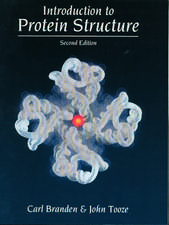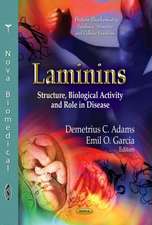Multiscale Approaches to Protein Modeling
Editat de Andrzej Kolinskien Limba Engleză Paperback – 18 sep 2014
| Toate formatele și edițiile | Preț | Express |
|---|---|---|
| Paperback (1) | 947.85 lei 43-57 zile | |
| Springer – 18 sep 2014 | 947.85 lei 43-57 zile | |
| Hardback (1) | 952.89 lei 43-57 zile | |
| Springer – 14 oct 2010 | 952.89 lei 43-57 zile |
Preț: 947.85 lei
Preț vechi: 1155.91 lei
-18% Nou
Puncte Express: 1422
Preț estimativ în valută:
181.43€ • 197.14$ • 152.50£
181.43€ • 197.14$ • 152.50£
Carte tipărită la comandă
Livrare economică 21 aprilie-05 mai
Preluare comenzi: 021 569.72.76
Specificații
ISBN-13: 9781489982360
ISBN-10: 1489982361
Pagini: 368
Ilustrații: XII, 355 p.
Dimensiuni: 155 x 235 x 19 mm
Greutate: 0.51 kg
Ediția:2011
Editura: Springer
Colecția Springer
Locul publicării:New York, NY, United States
ISBN-10: 1489982361
Pagini: 368
Ilustrații: XII, 355 p.
Dimensiuni: 155 x 235 x 19 mm
Greutate: 0.51 kg
Ediția:2011
Editura: Springer
Colecția Springer
Locul publicării:New York, NY, United States
Public țintă
ResearchCuprins
Preface.- Lattice polymers and protein models.- Multiscale approach to protein and peptide docking.- Coarse-grained models of proteins: theory and applications.- Coarse-grained modeling of biomolecules with transferable force field.- Effective all-atom potentials for protein studies.- Statistical contact potentials in protein coarse-grained modeling: From pair to multi-body potentials.- Bridging the atomic and coarse-grained descriptions of collective motions in proteins.- Structure-based models of biomolecules: stretching of proteins, dynamics of knots, hydrodynamic effects, and indentation of virus capsids.- Sampling protein energy landscapes –the quest for efficient algorithms.- Protein structure prediction: from recognition of matches with known structures to recombination of fragments.- Genome-wide protein structure prediction using template fragment reassembly.- Multiscale approach to protein folding dynamics.- Error estimation of template-based protein structure models.- Evaluation of protein structure prediction methods: issues and strategies.- Index.
Textul de pe ultima copertă
Multiscale Approaches to Protein Modeling is a comprehensive review of the most advanced multiscale methods for protein structure prediction, computational studies of protein dynamics, folding mechanisms and macromolecular interactions. The approaches span a wide range of the levels of coarse-grained representations, various sampling techniques and variety of applications to biomedical and biophysical problems. Thanks to enormous progress in sequencing of genomic data, we presently know millions of protein sequences. At the same time, the number of experimentally solved protein structures is much smaller, ca. 60,000. This is because of the large cost of structure determination. Thus, theoretical, in silico, prediction of protein structures and dynamics is essential for understanding the molecular basis of drug action, metabolic and signaling pathways in living cells, designing new technologies in the life science and material sciences. Unfortunately, a “brute force” approach remains impractical. Folding of a typical protein (in vivo or in vitro) takes milliseconds to minutes, while state-of-the-art all-atom molecular mechanics simulations of protein systems can cover only a time period range of nanosecond to microseconds. This is the reason for the enormous progress in development of various mutiscale modeling techniques, applied to protein structure prediction, modeling of protein dynamics and folding pathways, in silico protein engineering, model-aided interpretation of experimental data, modeling of macromolecular assemblies and theoretical studies of protein thermodynamics. Coarse-graining of the proteins’ conformational space is a common feature of all these approaches, although the details and the underlying physical models span a very broad spectrum.
Caracteristici
This book contains comprehensive reviews of the most advanced multiscale modeling methods in protein structure prediction The presented approaches span a wide range of the levels of coarse-grained representations This can be used as both a reference book for those who just are beginning with biomacromolecular modeling, and also as a source of more detailed information for those who are already experts in the field
Includes supplementary material: sn.pub/extras
Includes supplementary material: sn.pub/extras













